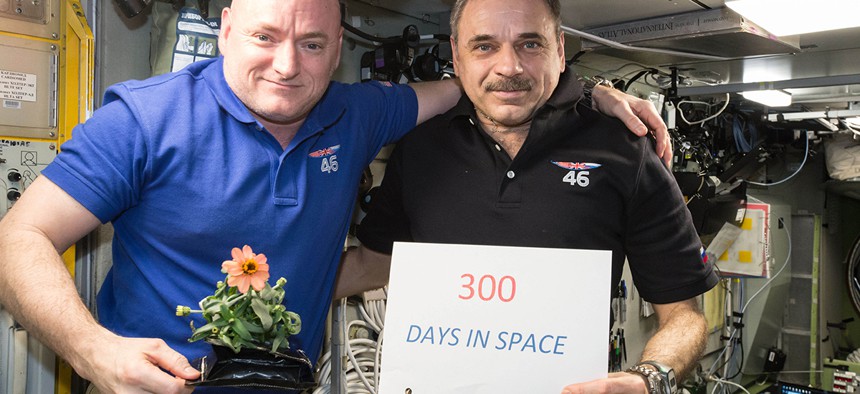Video: What NASA Learned From Astronauts Spending a Year in Space

One-year mission crew members Scott Kelly of NASA, left, and Mikhail Kornienko of Roscosmos celebrate their 300th consecutive day in space. NASA/AP
The human body isn't quite ready to go to Mars... yet.
A remarkable International Space Station experiment is coming to a close. NASA astronaut Scott Kelly and Russian cosmonaut Mikhail Kornienko are wrapping up their year in space aboard the ISS and will return to Earth on March 1.
What was their lengthy mission all about?
"A one-way trip to Mars is at least six to eight months, so it's really important for us to understand how the human body adapts beyond six months," said ISS scientist Dr. Camille Alleyne.
Because they spent such a long time in zero gravity, Kelly and Kornienko faced muscle atrophy, a loss of bone density, impaired vision, radiation exposure and the shrinking of their hearts (literally).
"Scott and Mikhail during this 1-year mission is really our first adventure in finding out what happens and how we can counteract the human adaptations for a long journey to Mars," Alleyne said.
To learn more, check out the video below from Wired:
NEXT STORY: The Reason SpaceX Keeps Aborting Launches



